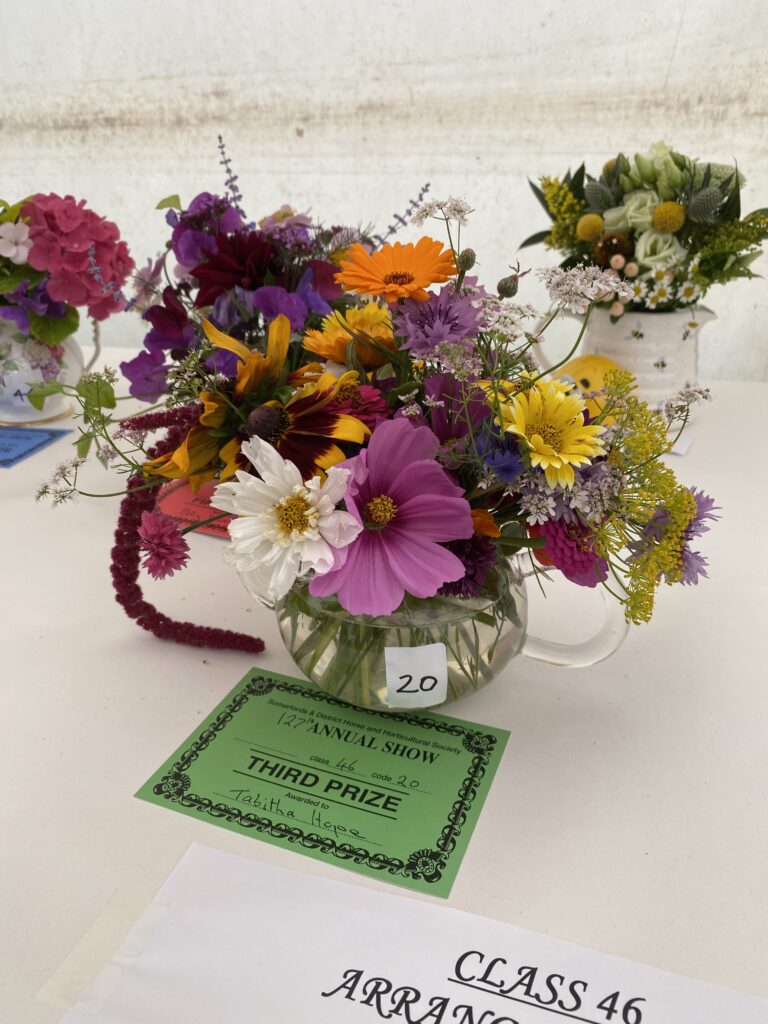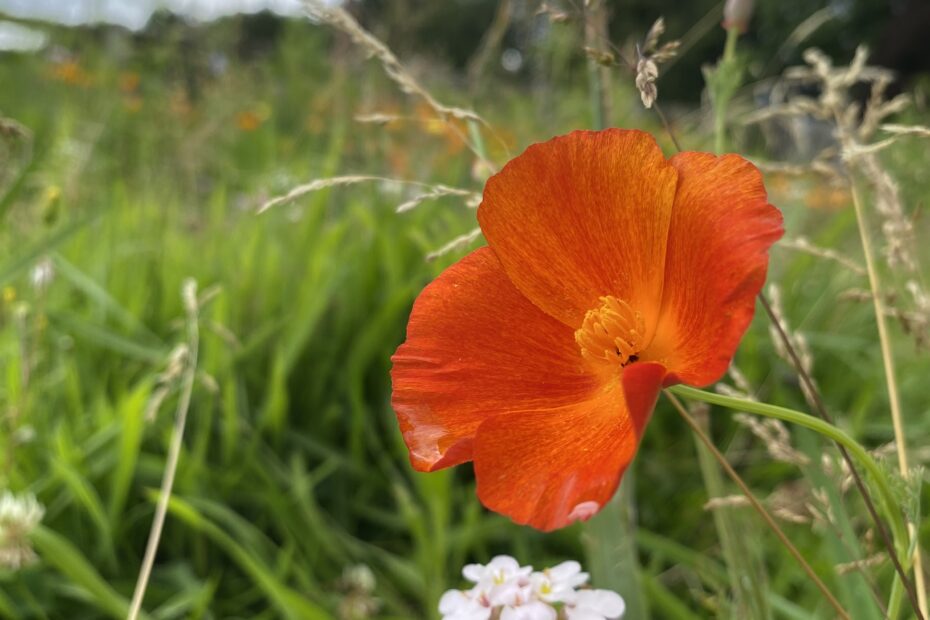Half of the fun of gardening is the anticipation. This feeling was even more heightened because I had never been in charge of a meadow project before. What flowers will appear first? Will the colours work? Will it look full and bountiful or a bit weedy? Will anything actually come up or will the garden look like a battlefield with added groundsel all summer? The anticipatory feeling begins way before the sowing day but ramps up to positively fizzing levels once those seeds are in your hand.
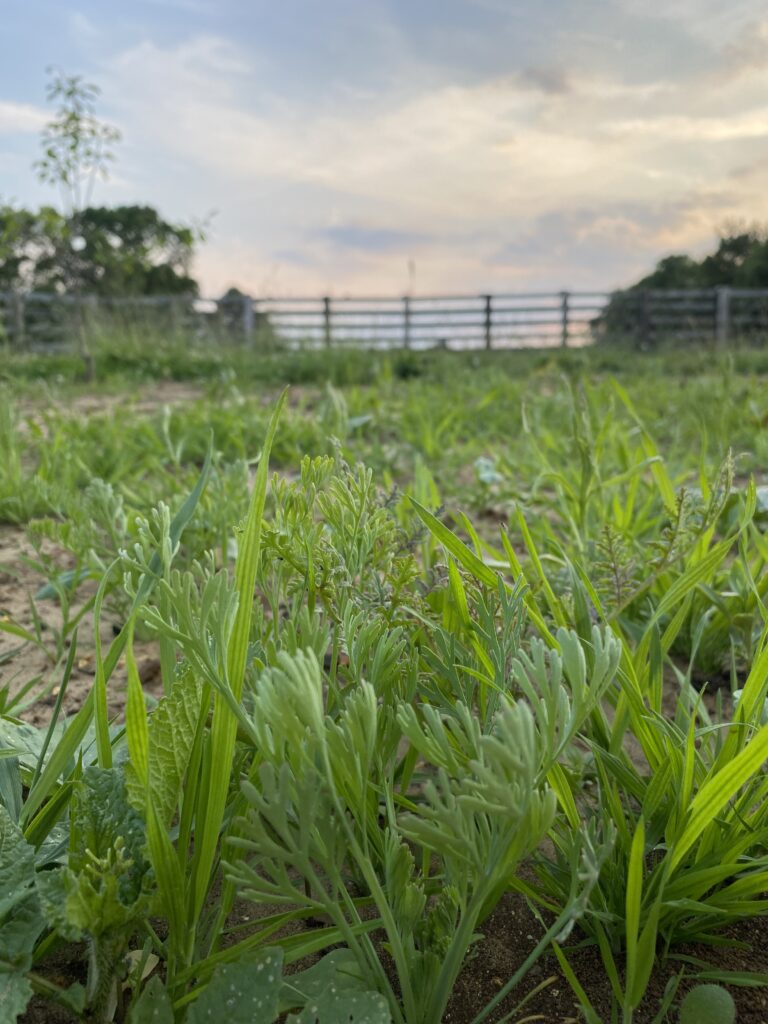
Spring had been a bit rubbish until about mid May. Average temperatures with cold spells and above average rainfall meant that we gardeners were eager to inject colour as soon as possible. There was no point sowing the Meadowmania Hardy Annual 100% Wildflower Seed Mix until the ground at Rose Cottage had started to feel a little warmer to the touch so mid May was the ideal time. We mixed the seed with horticultural sand to ensure that it was broadcast evenly. The excellent guidelines that Meadowmania provided with the seed packets were very helpful with regards to getting the correct ratios and approximate weight of seed to sow per square metre. We used the traditional technique of broadcasting the seed and sand mix by hand so that we could judge the evenness of the scattering by eye as we went along. It wasn’t long until all areas of bare or semi-bare soil were covered with an even layer of seed and sand.
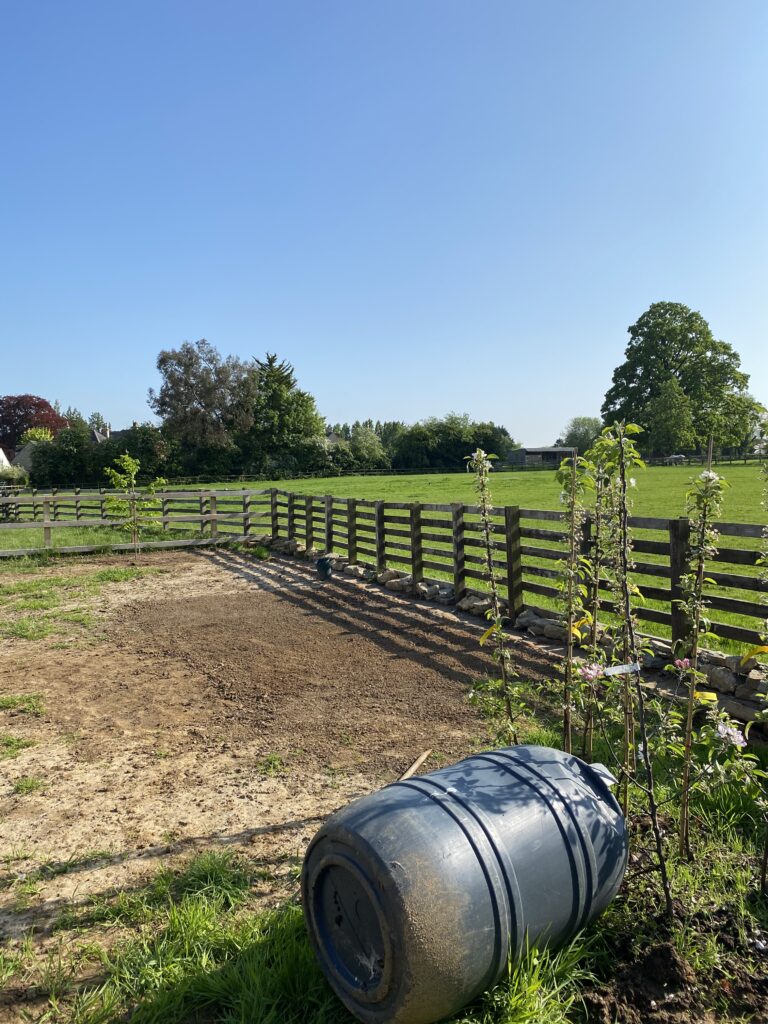
I am writing this as if I did all of this myself when in reality I was issuing instructions to the owner, Jerome. Jerome sowed the seed wonderfully evenly. He then made sure there was a good seed-to-soil contact by firmly pressing the seed into the ground. He then spent about six weeks watering the ground devotedly because, would you believe it, we had a glorious dry spell just when we didn’t need it. The water-conscious gardener in me cringed at the eco-unfriendliness of the project at this stage but I knew that it would be worth it in the end for the amount of floral rewards and habitats that the meadow would provide for wildlife.. I also kept in mind that this is a temporary project, and when the orchard establishes and the spring bulb meadow takes over from the annual summer meadow, this garden will be bombastically resilient to extreme weather conditions.
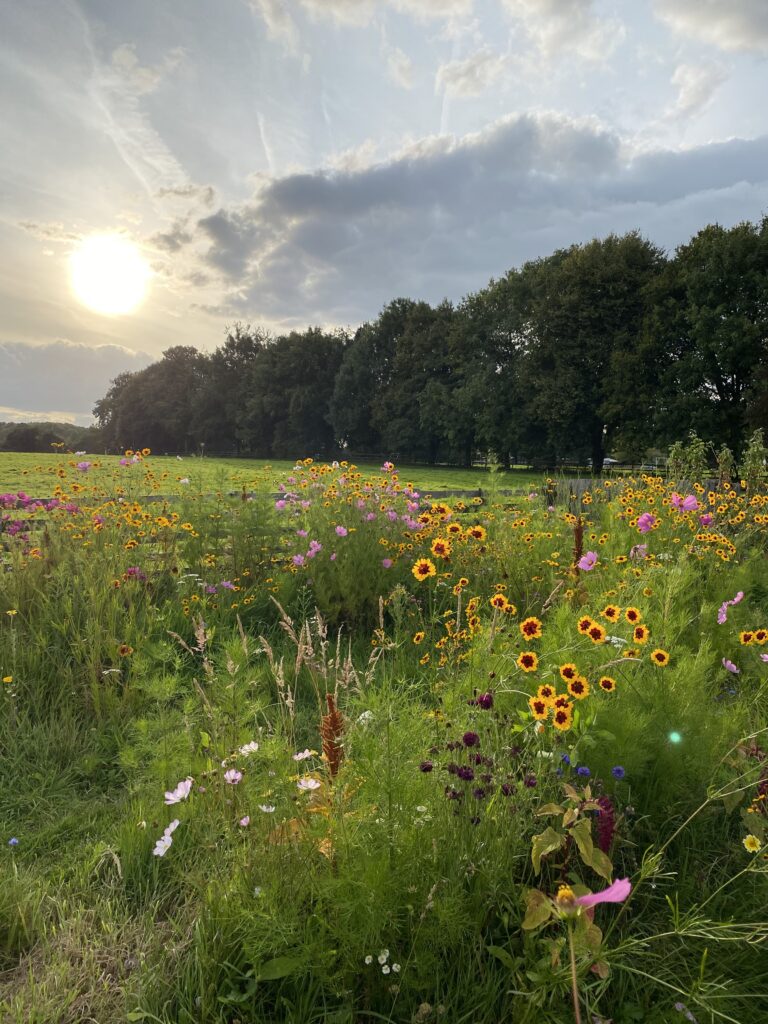
While Jerome was watering I was working on other projects and waiting for updates. I had no idea which flowers would appear first. I, like many gardeners, adore surprises. I relish magical accidental combinations – like the time that a pure white foxglove delicately snuggled up to Rose ‘Crown Princess Margareta’ or the time that I realised that Tulip ‘Slawa’ and the jaggedly cut foliage of lovage go marvellously together despite being wholly unplanned – so waiting for the jewel-like jumble of a wildflower meadow to appear was like waiting for Christmas when I was eight years old.
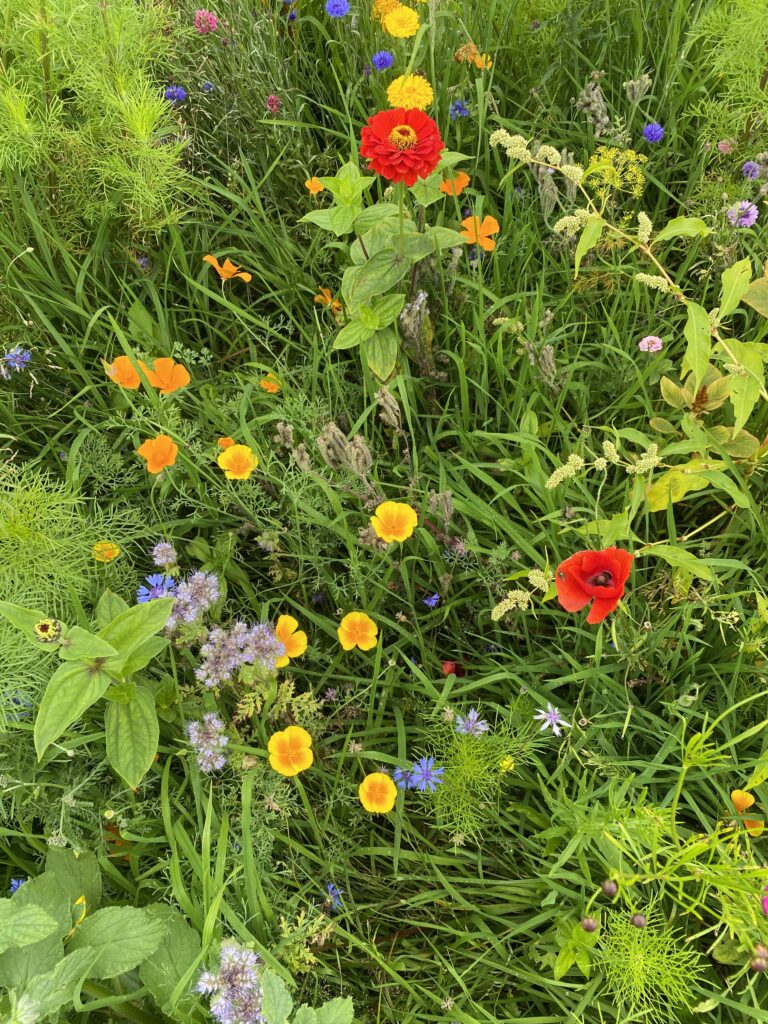
Now for the really fun bit ~ flowers. The Meadowmania description for their Hardy Annual 100% Wildflower Seed Mix promises “a striking range of annual wildflower species from around the world. Including native species such as Echium, and non-natives such as colourful Cosmos” and many more. The website promises Virginia stocks, larkspur, cornflower, Californian poppies, Gypsophylia, candytuft, mignonette, night-scented stocks and Calendula. As well as these beauties we were blessed with Zinnia, Coreopsis and a plant with gorgeous flowers – butter yellow fringed with white petals on delicate dancing stems – that took me ages to identify as Layia platyglossa, a native of western North America from the Asteraceae family. I can remember chucking a whole load of hand-collected flower seeds of mine into the mix too so I am not sure if the wonderful spires of Amaranthus were my doing or part of the fabulous mix from Meadowmania.
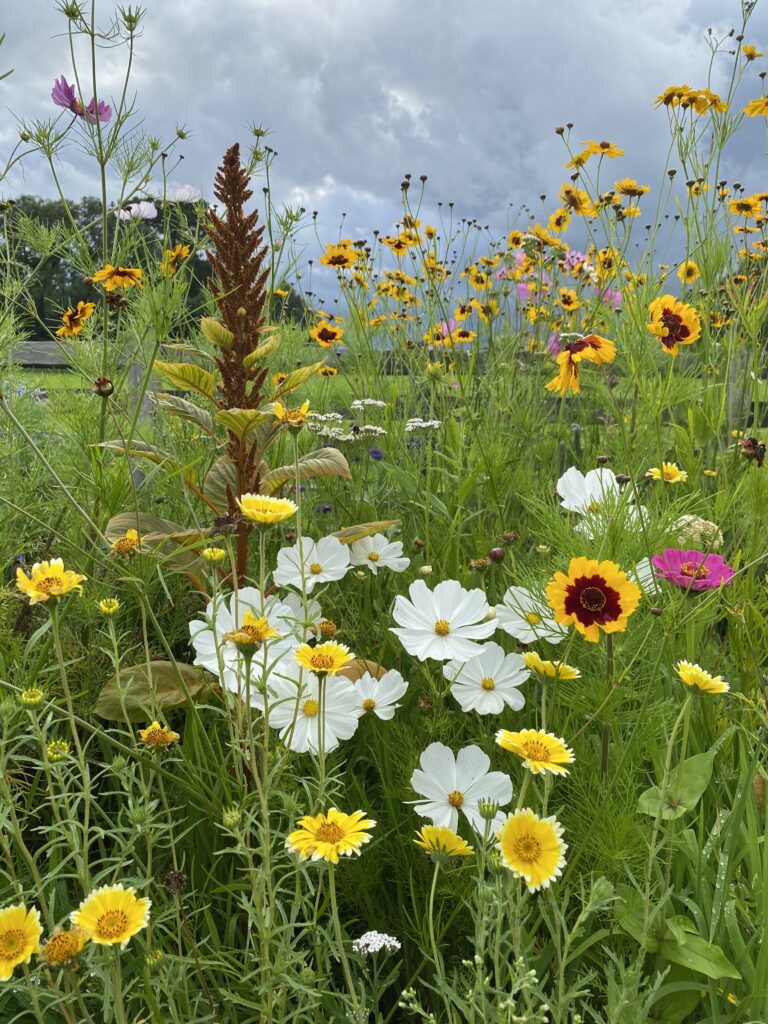
First to appear in June were the pretty yellow flowers of rocket plants. Yes indeed, our meadow was also edible in places! That was an unexpected bonus. Next came candytuft, Californian poppies by the thousand and the first few cornflowers. UK native Echium vulgare brought understated glamour, while night scented stocks bought the fragrance. As late spring became summer, Cosmos became the scene steeler but was never too thuggish not to share the limelight with red and deep orange poppies. The almost elusive Layia, borage, Amaranthus, Coreopsis, Zinnia, and Calendula joined in and suddenly we had the most riotously joyful party.
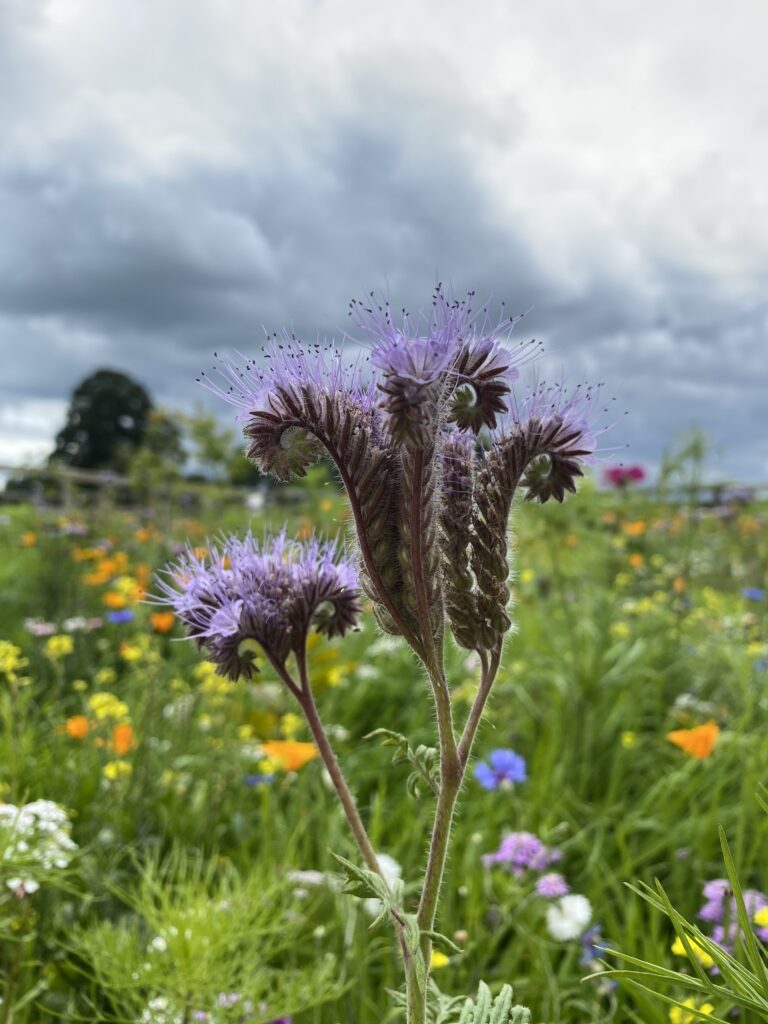
Abundance brought with it a wonderful chaos and the polite knee-high meadow became a waist high jungle and I loved every visit. I couldn’t wait to see what was shining brightest. With abundance also came decadence and we were invited to harvest great handfuls of flowers to bring inside. Some particularly spectacular specimens made it to the horticultural and industrial sections of our local agricultural show in August to great success.
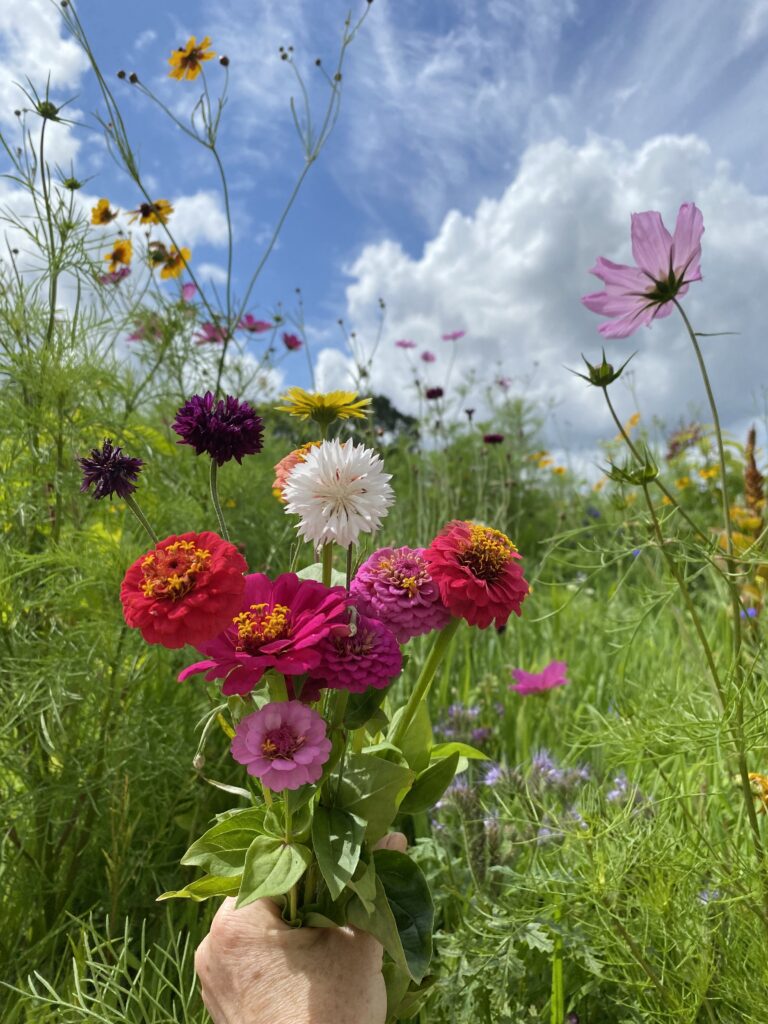
Wild carrot and feverfew appeared quite late in the season and the Cosmos decided grow further until it was taller than me. August and September were warm but also pretty soggy at times and that leant extra height to the Cosmos and Coreopsis. These were the main two species still standing as Autumn approached, giving the back garden at Rose Cottage a decidedly Battenburgian appearance. Then, just like that, it was over. Except it isn’t remotely over. With the orchard trees still small, it makes perfect sense to make another meadow next summer. That means that the work begins now.
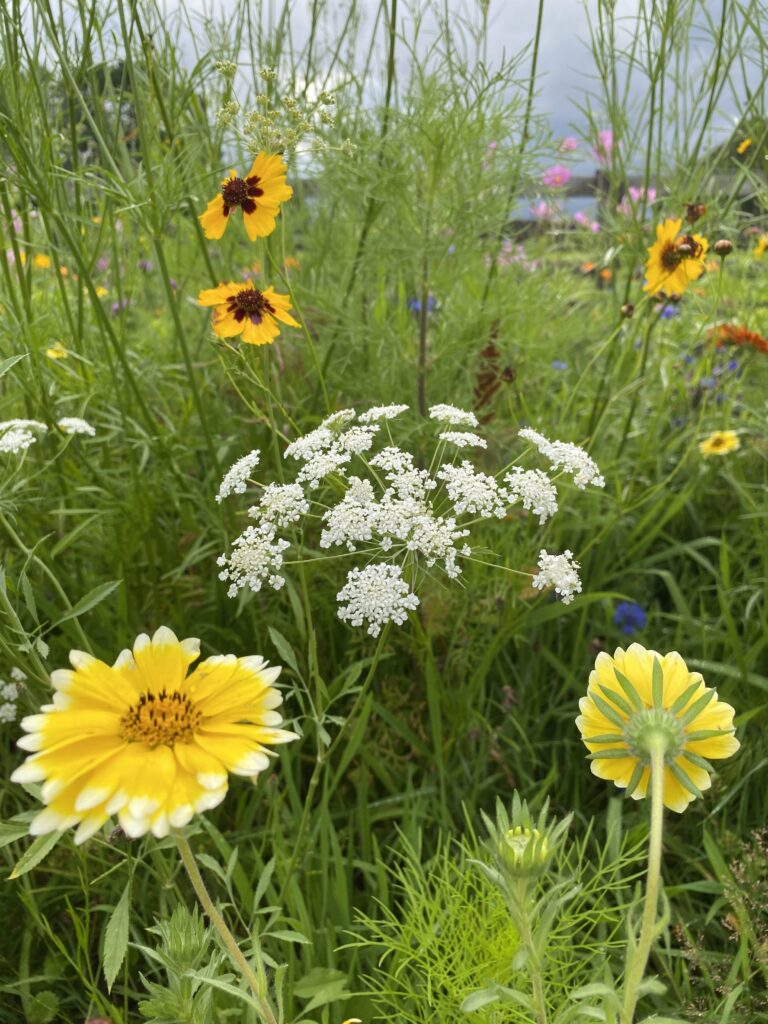
In my next blog I will describe how best to prepare for a meadow project. So many gardeners, garden designers and landscapers use chemicals to clear the way for a wildflower meadow. This is simply not acceptable when, with a little bit of effort and far less expenditure (nasty chemical herbicides are increasing in price all the time) anyone with the right garden conditions can make a riotous humdinger of a party meadow too.
